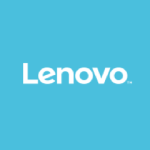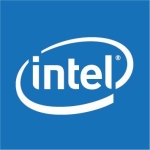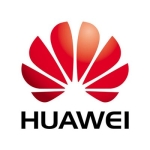Here are more specs when considering scalability:
The R920 12G Server is a four socket, 4U rack server that offers increased performance and expandability, boasting a 100% increase in IOPS performance (Input/Output Operations Per Second) over the previous-generation PowerEdge servers. Enhanced storage and compute density enables the R920 to run intensive mission critical applications for any midsized to large enterprise environment effortlessly.
The PowerEdge 12G family of servers introduces the new Intel Xeon E7-2800, 4800, and 8800 v2 family of processors to the 4U form factor. Delivering more cores, additional cache, and better power efficiency over the previous generation of Xeon Sandy Bridge processors.
The system supports up to two E7-2800 V2 processors, or for more performance choose up to (4) E7-4800 or (4) 8800 V2 series, 15 core processors, for a total of 120 threads with Intel’s QuickPath Interconnect clock rates of up to 8GT/s (Giga Transfers per second).
The Intel C602J chipset supports DDR3 memory, providing faster speeds, higher compute density, and lower power consumption than the previous generation.
When used with a 4 CPU configuration, a maximum of 96 DDR3 DIMMs can support an impressive 6TBs of LRDIMMs of 64GB modules.
Depending on the processor, the R920 can achieve memory speeds of up to 1600MT/s (Mega Transfers per second).
A choice of storage configurations supports up to 24 2.5 inch SFF drives allowing you to choose between SATA, SSD, or SAS drive options to best suit your needs. For maximum performance, the R920 can be configured to support 8 PowerEdge Express Flash PCIe SSD’s, optimizing input/output operations per second (IOPS), reducing mechanical latency and leveraging enterprise class reliability in NAND SSD’s, which offer a significant increase in performance and durability over standard hard drives.
The PERC H730P storage controller offers 12Gb/s on a PCIe 3 interface and supports RAID configurations 0, 1, 10, 5, 50, 6, 60 with 2GB non-volatile flash backed write cache.
For external storage, the optional PERC H810 6Gb/s adapter provides 1GB non-volatile write cache and supports RAID modes of 0, 1, 10, 5, 50, 6, and 60.
And, depending on the chassis configuration, the front of the PowerEdge R920 allows access to the power ON button, Non-Maskable Interrupt and system ID buttons, an LCD information panel, 2 USB 2.0 ports, optical drive, VGA connection, and an iDRAC vFlash SD card slot, which requires an iDRAC enterprise license.
The back of the server provides access to redundant power supplies, 2 USB 2.0 connections, VGA port, dedicated iDRAC Enterprise connection, serial port, a choice of quad port LAN or dual port LAN with dual 10Gbe port, and PCIe slots.
Choose between the platinum or titanium rated 750W power supply or the platinum rated 1100W power supply. Up to 4 hot plug redundant PSU’s can be configured with the system.
The R920 comes with 8 PCIe 3.0 slots standard and two more can be added so there’s plenty of room for expansion.
CPU 1
Slot 1: half-length, full-height, PCIe 3.0 x8 (x24 connector), baseboard
Slot 2: NDC riser slot (Network Daughter Card)
Slot 3: half-length, full-height, PCIe 3.0 x8 (x16 connector), baseboard
(optional riser)
Slot 1/1: full-length, full-height, PCIe 3.0 x4 (x8 connector), left riser
Slot 2/2: half-length, full-height, PCIe 3.0 x4 (x8 connector), left riser
Slot 4: half-length, full-height, PCIe 3.0 x16 (x16 connector), baseboard
Slot 5: half-length, full-height, PCIe 3.0 x16 (x16 connector), baseboard
4 CPU systems
Slot 6: half-length, full-height, PCIe 3.0 x16 (x16 connector), baseboard
Slot 7: half-length, full-height, PCIe 3.0 x16 (x16 connector), baseboard
Slot 8: half-length, full-height, PCIe 3.0 x16 (x16 connector), baseboard
Slot 9: half-length, full-height, PCIe 3.0 x16 (x24 connector), baseboard
(optional riser)
Slot 1/9: full-length, full-height, PCIe 3.0 x8 (x16 connector), right riser
Slot 2/10: half-length, full-height, PCIe 3.0 x8 (x16 connector), right riser
Various PCie cards can be installed including additional NIC’s, Infiniband cards, and Fusion IO drives.
Dell’s iDRAC 7 Express Level Management Technology comes standard offering remote management and monitoring without the need to install additional software. Upgrading to Enterprise allows you to maintain complete server control and access your server from any remote location using a browser, in addition to enabling the dedicated management port and vFlash SD slot.
The R920 can weigh up to 130 lbs. and is 6.8” tall…….18.99” wide…..and 29.65” deep (31.59” with PSU and bezel).
Supported operating systems include Microsoft Windows Server, Red Hat Enterprise Linux, SUSE Linux
Enterprise Server, Oracle Solaris, VMware, and Citrix XenServer.











